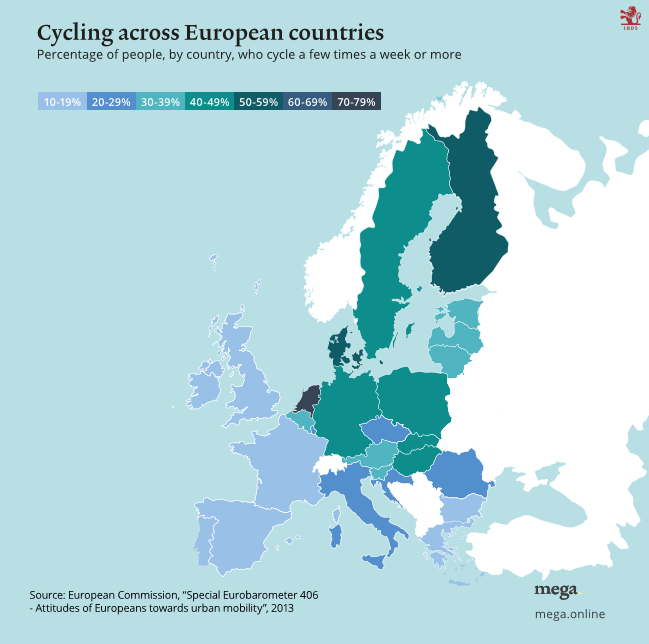High-tech bicycle lights are making cycling safer and helping authorities to design cities that work better for two-wheeled commuters.While it is an oft-repeated truism that biking is as good for your health as for the environment, only a very small proportion of the population has embraced a two-wheel lifestyle. In the EU for example, on average just 12% of people cycle every day, while 50% go by car and 16% use public transport. Walking rates are high, but most journeys are too far to be made entirely or largely on foot.However, there have been efforts to make cycling a key part of city planning—something that can now be done more effectively thanks to new technology that provides much more accurate data on rider behaviour than before. Irene McAleese, co-founder of See.Sense, which
Topics:
Perspectives Pictet considers the following as important: Environmental transportation, Macroview, Sustainability
This could be interesting, too:
Cesar Perez Ruiz writes Weekly View – Big Splits
Cesar Perez Ruiz writes Weekly View – Central Bank Halloween
Cesar Perez Ruiz writes Weekly View – Widening bottlenecks
Cesar Perez Ruiz writes Weekly View – Debt ceiling deadline postponed
High-tech bicycle lights are making cycling safer and helping authorities to design cities that work better for two-wheeled commuters.
While it is an oft-repeated truism that biking is as good for your health as for the environment, only a very small proportion of the population has embraced a two-wheel lifestyle. In the EU for example, on average just 12% of people cycle every day, while 50% go by car and 16% use public transport. Walking rates are high, but most journeys are too far to be made entirely or largely on foot.
However, there have been efforts to make cycling a key part of city planning—something that can now be done more effectively thanks to new technology that provides much more accurate data on rider behaviour than before. Irene McAleese, co-founder of See.Sense, which makes high-tech, smart bicycle lights, says that cyclists are “an invisible group of people and the risk is that if we don’t get data about how cyclists experience the city, it won’t get planned for and supported.” Her company’s connective bicycle lights allow city planners to access accurate real-time data crowd-sourced by a broad range of cyclists. Inspired by mobile phone technology, the lights use sensors to read the environment – including how rough the road surface is and whether there is congestion. Some 40,000 are already in circulation across the UK
Insights can then be aggregated anonymously to give an up-to-date picture of cycle routes, behaviours and accident trouble-sports. According to McAleese “longer term, the data can be used for planning in terms of what the cycling network looks like in the city and what should it look like – what are the popular routes, where do people actually want to travel as opposed to where we think they might want to travel”.
See.Sense has already been involved in pilot projects with city authorities in Manchester and Dublin, and has established a partnership with British Cycling, the UK’s national governing body for cycling, to use the data to improve cycling infrastructure and increase funding for promoting bicycle.
“For cities that want to get more people cycling the biggest barrier essentially is the perception of safety. If you can make the experience safer – and also more convenient – that will do the most to remove the barriers,” McAleese says.

